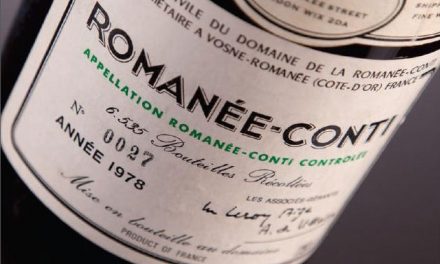There are times when the most memorable wine experiences occur in surprisingly unassuming circumstances. I was reminded of such a highlight from a recent 2012 Italian vacation that involved a bottle of Amarone.
It was towards the end of a Po Valley biking trip in Northern Italy, where we found ourselves smack in the center of the Veneto appellation. Here Valpolicella was the main red wine and Amarone reigned supreme as rare and expensive, an elite product of the region. Intensely concentrated, raisiny, with high alcohol content, Amarone had never been on my list of favorites. Nevertheless, with my curiosity peaked after hearing so much about it while there, I sought it out in what turned out to be a peculiar shopping occasion, in a boutique wine shop near Bardolino, a resort town on the scenic shores of Lake Garda, also known for a namesake wine produced in the area.
The proprietor, a mild mannered, middle-aged, bespectacled man was friendly but spoke little English. We communicated with whatever he understood, supplemented by my unique Italianated Spanish that somehow passed muster. After discovering my quest he directed me to the particular bottle you see above, a 2007 Capitel Monte Olmi from Tedeschi, a well known family producer in the region, for which I paid what I consider an ungodly price – for an Italian wine.
He then tried to explain to me how Amarone is made and how it differs from Valpolicella. I did not understand a word of it. I had to look it up later. While the grape varietals of these two are the same, Corvina and Rondella, mostly the former, Amarone is made from select, late picked grapes from old vines, these then dried through winter into a much shrunken, raisiny state. They are then vinified. and rarely released before five years of aging. With more grapes needed per bottle than Valpolicella and the expensive aging process, Amarone is always pricy, currently above $50 per bottle.
As we said arrivederchi to our friendly wine shop owner he offered a last pearl, one that I did understand. He recommended we drink it with a local cheese sold in a particular deli in nearby Garda, a town already familiar to us since we had visited it several times and taken note of this specialty shop with its dazzling variety of gourmet items. He had to scratch the hard-to-remember name of the cheese on to a piece of paper that became a memento of that trip. Monte Veronese Invecchiatto.We promptly went to Garda and bought a large slab of the cheese.
We had several more days in the trip and found no occasion to open the Amarone or the cheese, hauling it around in our luggage here and there. Our last stop was Bellagio, on the shores of Lake Como, where we stayed in the Hotel du Lac you see in the above photo, overlooking the picturesque ferry pier. Weary and homesick, we decided to spend our last Bellagio evening in our small hotel room reading, observing the scenery, and downing the Amarone with the Monte Veronese.
The wine was indeed powerful but its intensity was perfectly tempered by the hard, sharp cow’s-milk cheese from the Italian Alps, dry and well aged (Invecchiatto means aged). Sitting in our underwear, drinking from paper cups, cutting mouthfuls of cheese with my trusty Swiss-army-knife, we had the most pleasant evening of our trip within the cramped confines of our spartan room. The wine tasted divine, so did the cheese, in a way it would not have back home.
I was reminded of all this a few nights ago at a tasting in my friend Dr. Padmesh’s house, to which I brought another Amarone, a 2007 Corte Rugolio, Amarone Classico. It clashed with all the other wines in our line-up and puzzled most tasters, our group unaccustomed to this wine. Fortunately there was some well aged, sharp, salty Gruyere around afterwards to re-taste and truly appreciate the pleasures of this unique, powerful, yet elegant wine which is best with the right cheese. I then told them about our evening in Bellagio.








